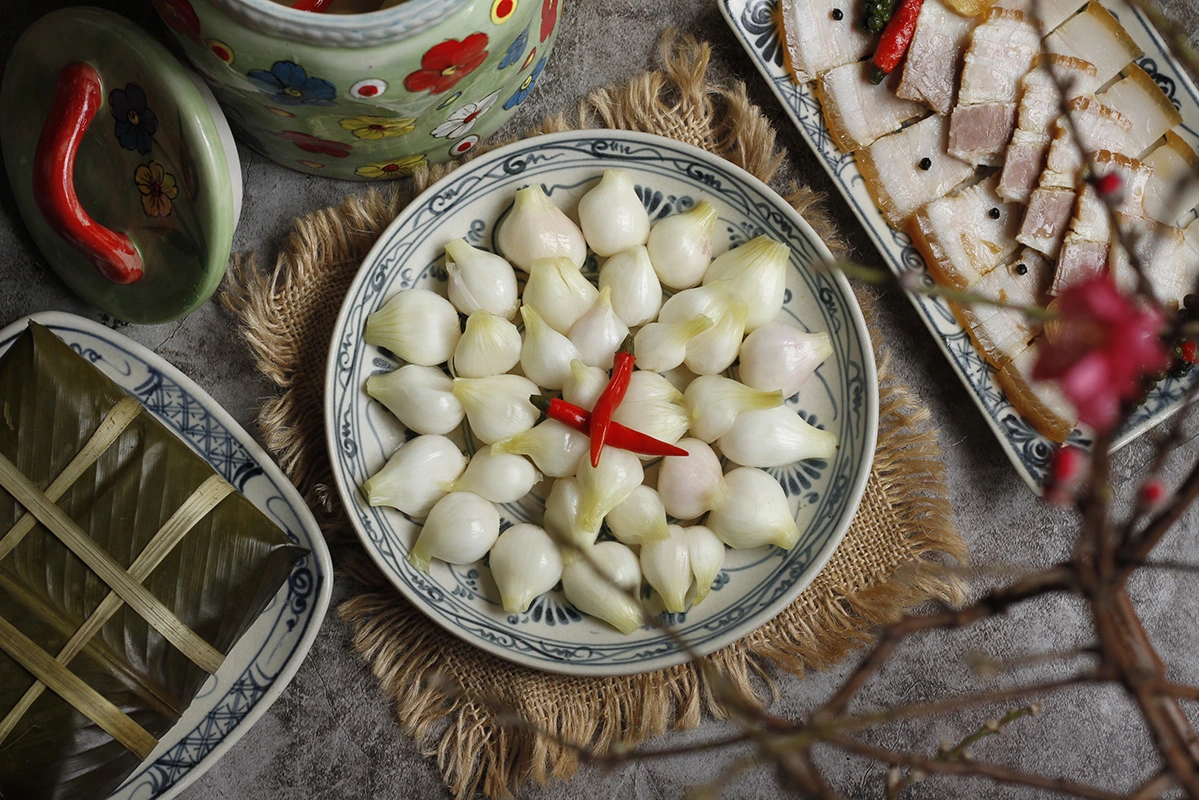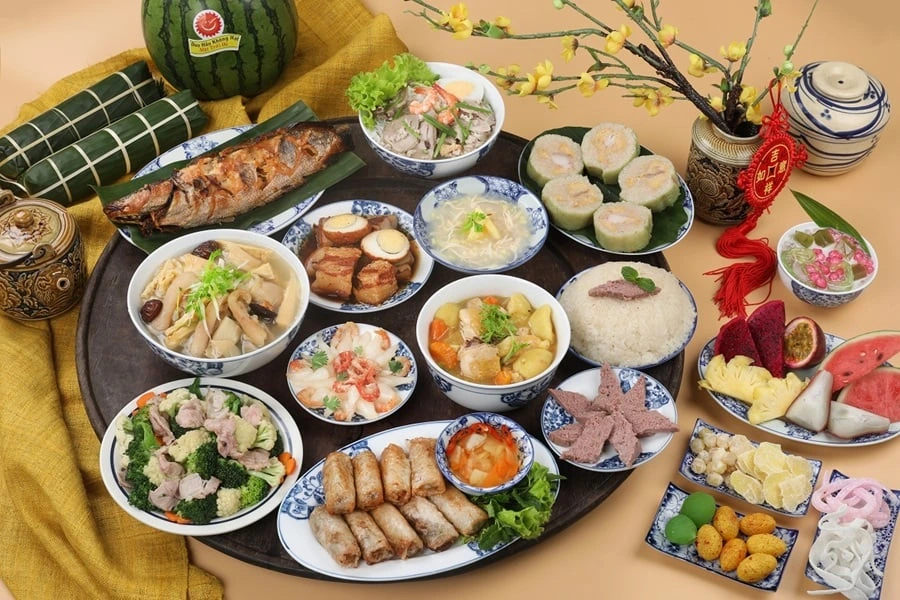
At Tet, a diverse array of dishes – from sticky rice cakes and spring rolls to boiled chicken – graces family food trays everywhere, symbolizing prosperity, luck, and familial unity.
As the Lunar New Year approaches, Vietnamese households bustle with excitement and anticipation, preparing for one of the most significant and cherished celebrations of the year. Join us on a culinary journey as we explore the 10 common dishes that adorn the Lunar New Year food tray in Vietnam.
Banh chung/banh tet (sticky rice cakes)
Banh chung, a square rice cake, is commonly enjoyed savory in northern Vietnam, while banh tet, a cylindrical sticky rice cake and a specialty of central and southern region, can be found in both savory and sweet variations.
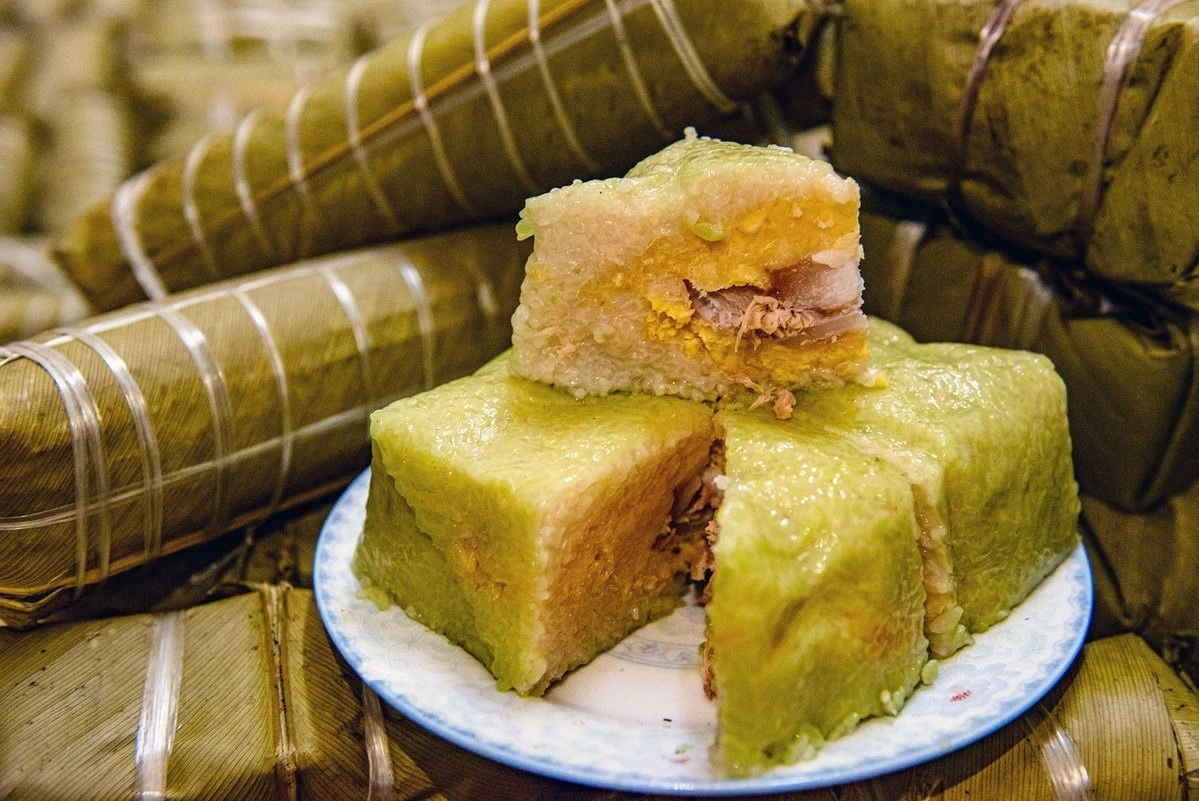
The main ingredients of both these cakes often include glutinous rice, mung beans, pork belly, and a blend of spices such as salt, pepper, green onions, and fish sauce. These ingredients are layered, wrapped in banana leaves, and boiled or steamed until cooked through.
Boiled chicken
Boiled chicken, a dish originating from Chinese cuisine, holds a significant place in Lunar New Year celebrations across Vietnam. In Vietnamese culture, roosters are traditionally favored over hens in New Year offerings. The rooster symbolizes new beginnings and the start of favorable conditions for agriculture. During Lunar New Year’s Eve worship, offerings of sticky rice and boiled chicken are made, symbolizing hopes for prosperity and success in the upcoming year.
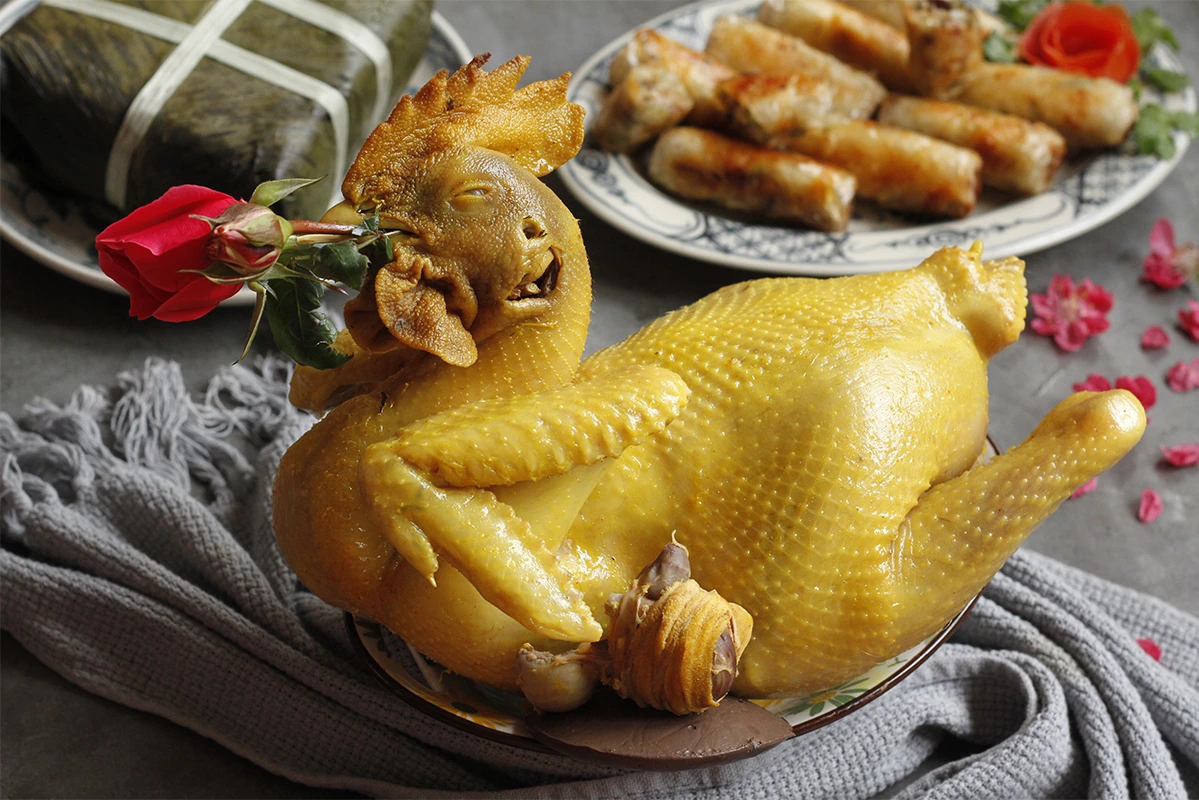
The chicken is boiled until shiny and golden, infused with aromatic flavors of ginger. Accompanied by a salt and lime dip, it’s served alongside sticky rice.
Gio lua/gio xao (Pork roll/ pork ear roll)
Pork roll, known as cha lua in the central and southern regions and gio lua in the north, is a pork delicacy commonly found in the food tray during Lunar New Year. Meanwhile, pork ear roll is a dish often enjoyed during Tet celebrations in northern Vietnam.
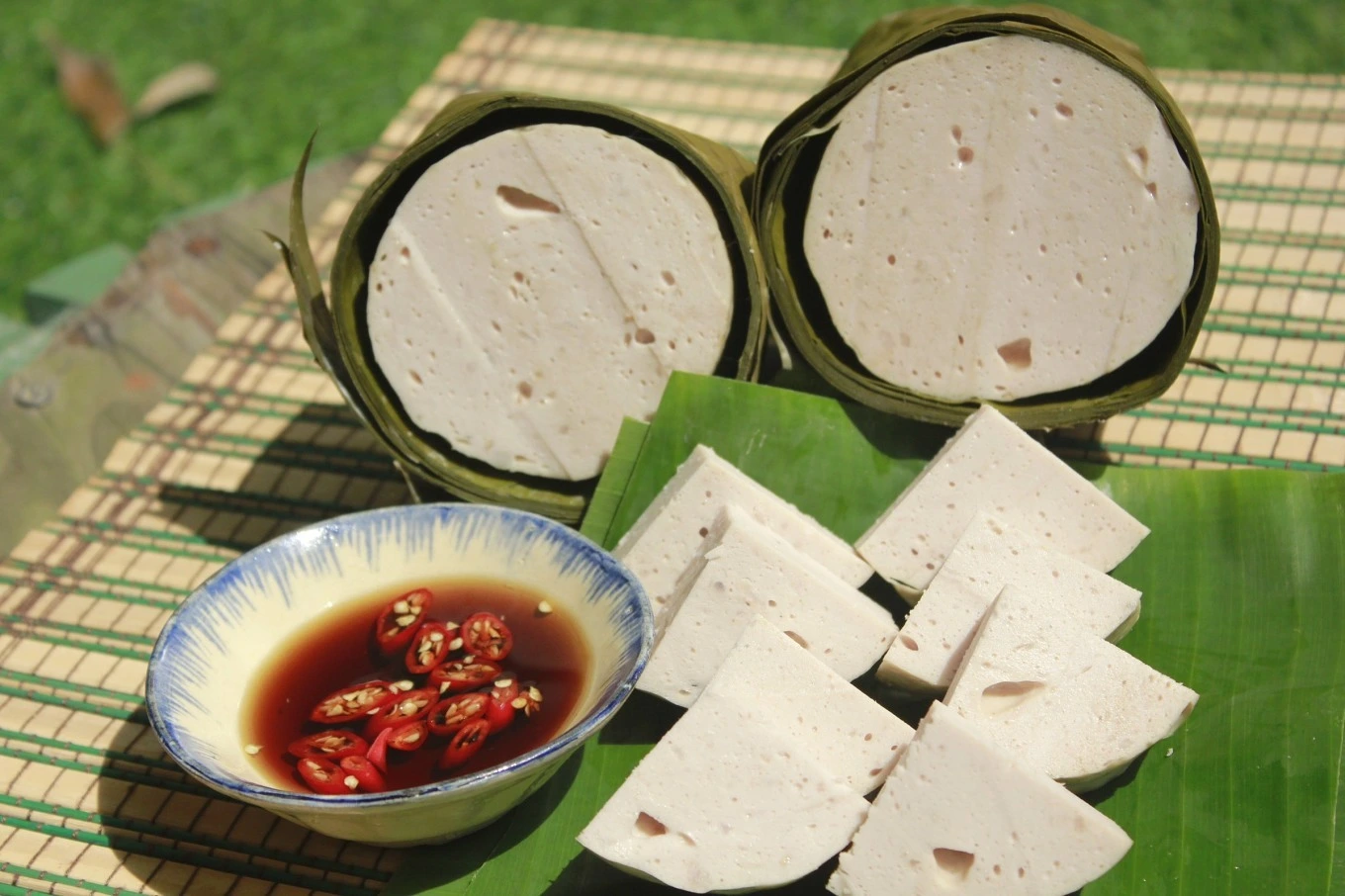
Xoi gac (red sticky rice)
In Eastern culture, the color red represents happiness, luck, and goodness. During special occasions like Tet and ancestral ceremonies, people prepare a dish called red sticky rice. This dish is made by mixing sticky rice with gac fruit (sweet gourd). The rice is cooked until it’s soft and fragrant. The result is red sticky rice, believed to symbolize prosperity and good fortune.
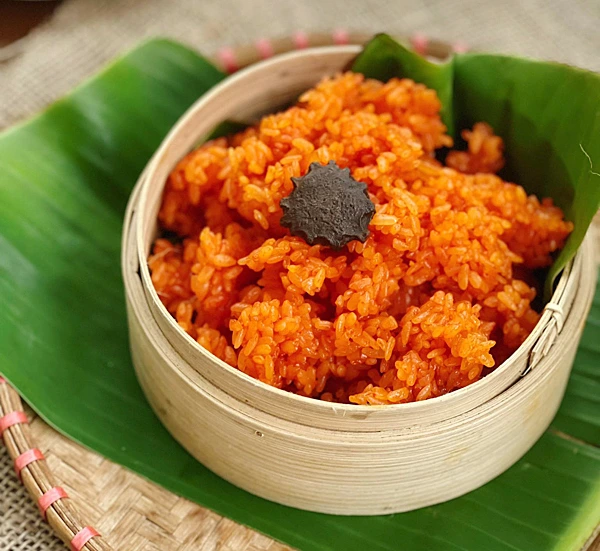
Spring rolls
Spring rolls are known as cha gio in the south or nem ran in the north. Filled with a savory mixture of pork, shrimp, carrots, wood ear mushrooms, glass noodles, and bean sprouts, then wrapped in rice paper. The rolls are fried to perfection, resulting in a golden hue and a crispy exterior.
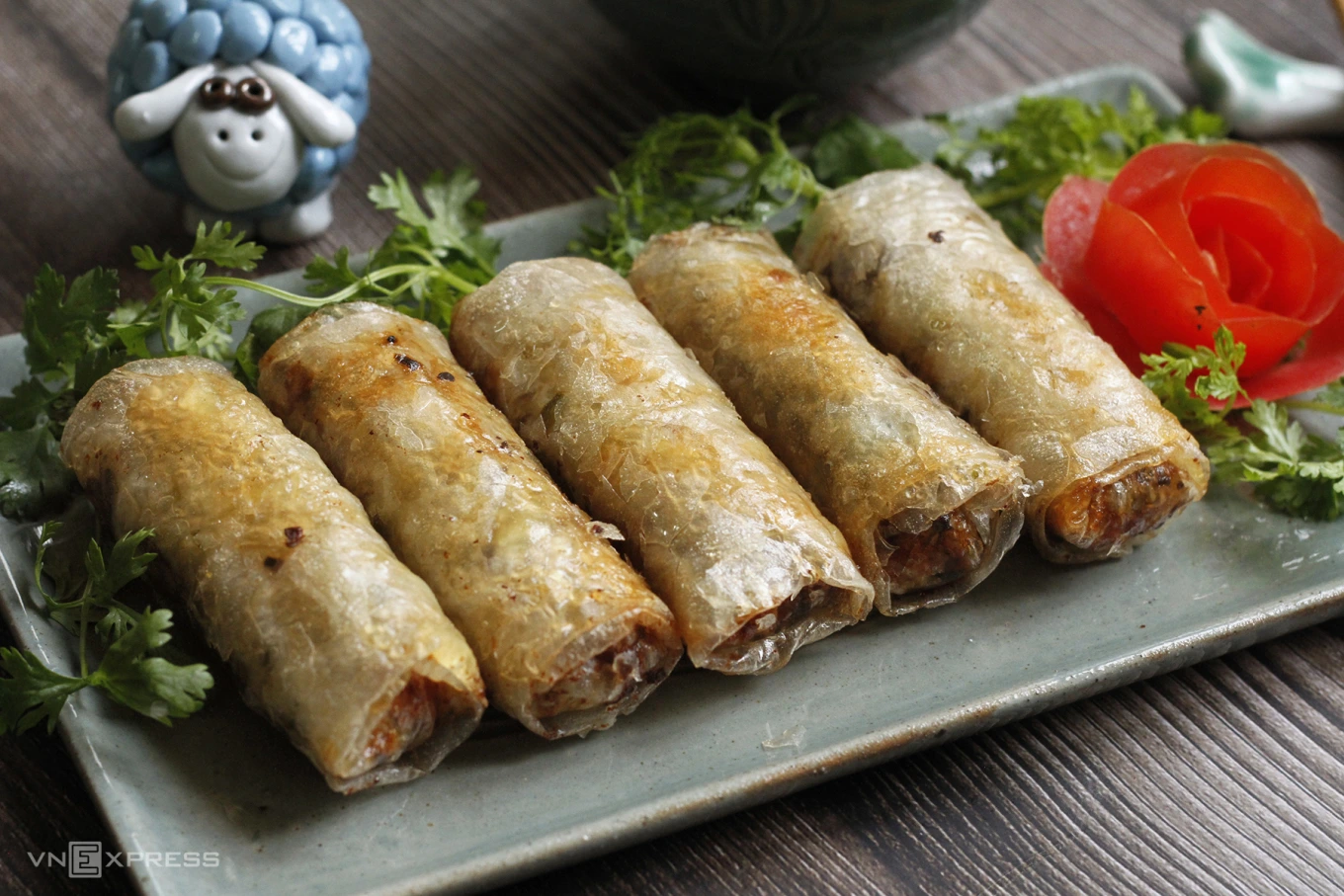
Braised pork with duck eggs
Braised pork with duck eggs is a Tet dish widely enjoyed in southern and central regions. Prepared with pork belly, garlic, shallots, soy sauce, sugar, and fish sauce, braised pork is simmered in a blend of coconut water, garlic, and shallots. Slow-cooked alongside duck eggs until tender, it’s commonly served alongside rice or pickled mustard greens.
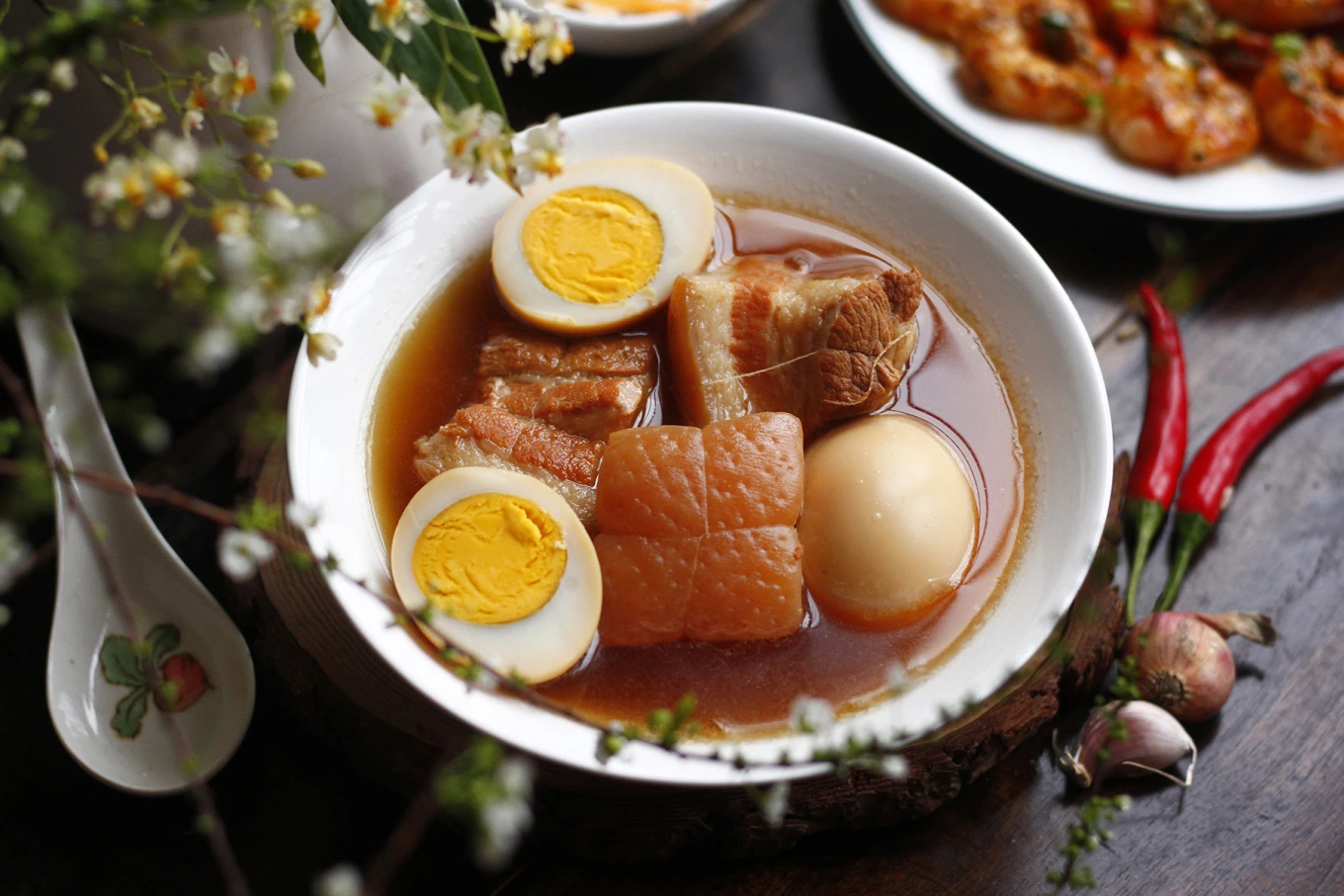
Stuffed bitter melon soup
Canh kho qua, or stuffed bitter melon soup, is another dish enjoyed during Lunar New Year in southern regions of Vietnam. It’s made by filling bitter melons with a mixture of ground pork, fish, mushrooms, and spices, then simmering them in broth until tender. The name kho qua, or bitter melon, explains the wish for all kho, sorrows and misfortunes of the old year, to qua – pass, to receive good news in the new year.
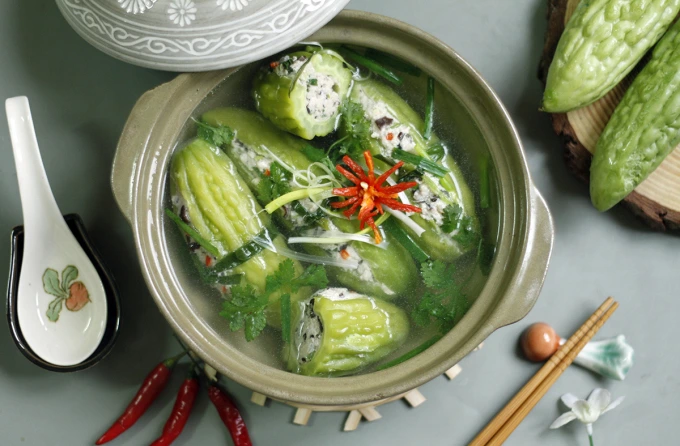
Dua hanh and cu kieu (pickled leeks and shallots)
Pickle dishes like dua hanh (pickled shallots) and cu kieu (pickled leeks) are commonly found on festive menus. Pickled shallots are a favorite in northern regions, whereas pickled leeks are preferred in the south. Their mildly sour, slightly spicy, and aromatic flavors serve to offset the richness of dishes such as braised pork and sticky rice cakes.
